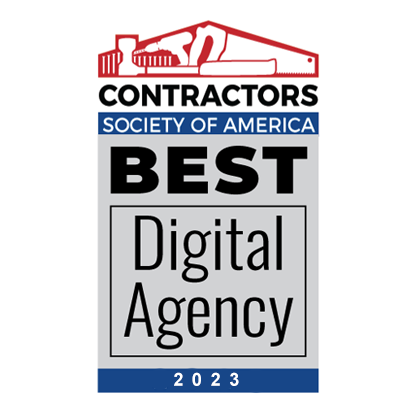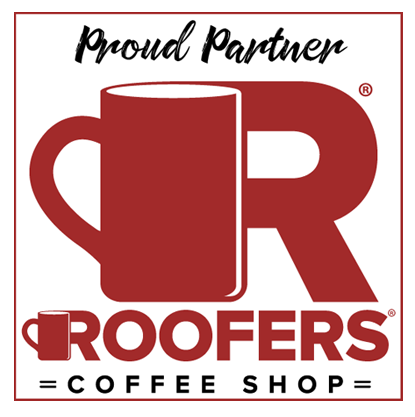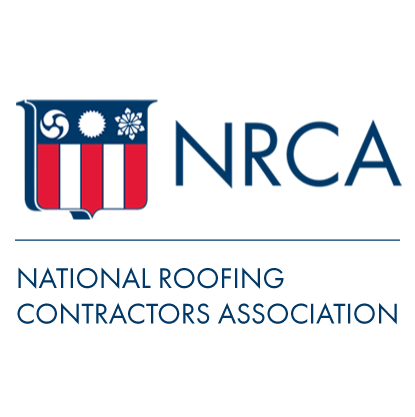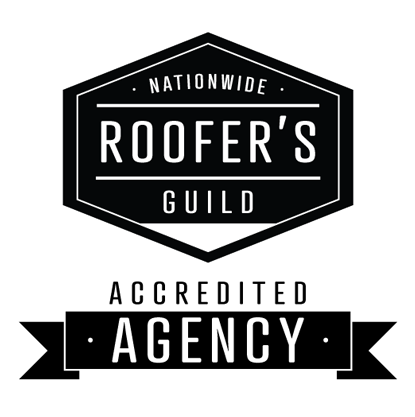Roofing website content is what appears on your website’s homepage, about us page, service pages, and blog posts. Content can include text, images, videos, infographics, and more.
The purpose of roofing content is expansive as it helps convert visitors into customers and helps your site show up on Google.

Content Marketing Credentials
At Roofing Webmasters, we’ve worked with 1,000+ roofing companies over the past 15 years to craft unique and original content that performs well on Google search results.
Based on this direct experience, we’ve compiled a comprehensive guide to creating perfect content for your roofing company website.
Perfect Roofing Content
- Concise
- Direct
- Informative
- Optimized
- Valuable
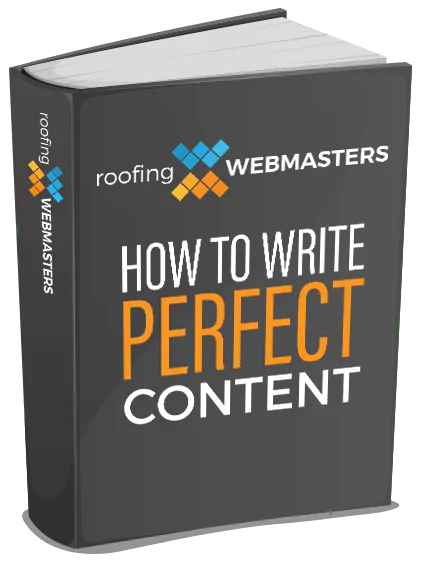
Download the Free PDF for How to Write Perfect Content
The Importance of Roofing Content
First, you should understand why content is important. Why should you invest time, resources, and possibly money into content creation as a roofing contractor?
Building an online presence for your roofing company is challenging. You need a website, of course, but that alone will not be enough to rank high on Google. To separate yourself from competitors, you need high-quality content.
Google has stressed the importance of quality content in its Webmaster Guidelines. Even so, they’ve stopped short of providing explicit instructions for writing perfect website content. That’s what we’re here for.
Simply put, content is one of the top Google search ranking factors. It explains your company and its services and helps consumers make informed decisions about their roofing needs.
Well-written content helps brand you as a professional, authoritative leader in your industry.
To understand how to create perfect content, you first need to understand the building blocks of SEO (Search Engine Optimization) and how Google looks at your content.
Check out our roofing SEO guide to learn more.
Content Basics for Roofing Websites
When you launch a website with multiple pages, the content on each page is eventually “crawled” by Google. What Google finds when crawling your site determines where they rank each page and for what keywords.
Your homepage, for example, should explain who you are and what you offer and indicate to Google the needs of users who want to visit your website.
Ten years ago, ranking content for roofing websites was easy as long as you knew the basics of keyword placement. Today, securing top rankings is much more competitive and requires content that meets the searcher’s needs.
The old way of ranking content relied on “keyword stuffing,” which meant repeating a term like roofing company excessively on a single page. Today, Google values engaging, informative, and unique content.
Keyword Stuffing Example
“We are a roofing company in Denver. Our Denver roofing company is the best roofing company in the Denver area. When you require a Denver roofing company, call us!”
Keywords are still important for content, but keyword stuffing is not how to optimize them. Furthermore, a recent Ahrefs study concluded that many searches leading to website clicks don’t include a measurable “keyword.” As a result, variations of a general term or phrase are important.
This guide explains how to implement keywords in your content correctly. Keywords are the terms users search for before finding your website. If enough people search for a term or phrase monthly, it becomes considered a high-volume keyword.
The text entered into the search box is known as a “query. An example of a search query is “roofing company in Denver.” Of course, roofers in the Denver area would like to rank for this query and should include it within their content.
However, it should not be spammed in the way the example above showcases. Google considers that kind of content to be spam.
How to Enhance Your Roofing Content:
- Keyword optimization and variation
- Authoritative and unique insights (especially data-driven)
- Enhancements such as bold, italics, bullet points, and more
- Essential SEO components such as title tags and meta descriptions
- Visual content like images, infographics, and video embeds
Perfect roofing content informs visitors about your company and services, excluding fluff and unnecessary filler. At its best, content drives new visitors to your website and converts them once they enter.
Content can take many forms and variations, including service descriptions and blog posts.
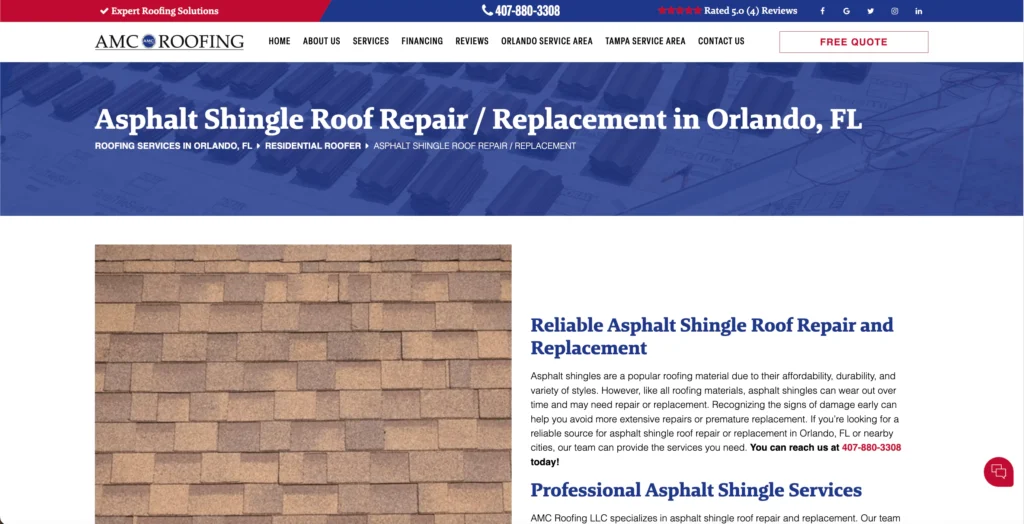
Google’s Helpful Content Update
In August 2022, Google released its Helpful Content Update, which targets low-value content, including AI-generated content that does not help users.
Since then, additional phases of this update have continued to roll out.
Unfortunately, roofing websites are notorious for publishing low-value content, especially poorly written blog posts that aim only to drive SEO traffic via Google search.
The Helpful Content Update places a premium on valuable content that offers unique insights.
As a roofing company, showcasing your expertise, authority, and trust (E-E-A-T) through your web content is important. Instead of publishing mindless blog posts, try utilizing social proof via DataPins software.
Audience, Intent & Authority
The first step to writing content is determining your target audience and user intent. Understanding who you are addressing and their needs will give direction and organization to your writing.
It is often helpful to ask yourself:
- Who am I speaking to?
- What are their needs?
- What do I want them to know?
- How will I portray my message?
Focusing on user intent is not only important for user experience, but it is also an indicator to Google that your content deserves to rank for the right kinds of search queries.
Search engines assess how effectively you address an audience based on how they respond to and interact with your content.
Here’s how you might define a target audience
Homeowners in my local area who need roofing services
Here’s what you might want to communicate with them
As a local, 3rd-generation roofer, I am uniquely qualified to provide residential roofing services in this area.
The challenge is portraying that message clearly and convincingly. Authority is one way Google and its users become convinced that your content is worth their while.
Remember, Google aims to deliver its users a website that most effectively matches their search query and meets their needs. Roofers who establish themselves as authorities are often prioritized.
Establishing a target audience, researching their needs, and crafting high-quality content to communicate your services will endear your website to Google and consumers alike.
Conversely, throwing something together in minutes will create disorganization and confusion.
Depth, Unique Value & User Experience
Not only do you need to have a clear purpose for your website’s content, but you also need to have depth.
As time has progressed and Google’s algorithm has improved, they have constantly updated it to weed out spammy websites. One of the more recent updates was called the Panda update. This update penalized websites with shallow content.
Google wants to see a well-crafted page that covers every question a reader may have regarding the page’s topic. Word count is not a ranking factor, as different queries require different lengths.
Adding unnecessary fluff to your pages to make them appear longer only decreases the page’s value.
Furthermore, the recent emergency of AI content generation tools like ChatGPT has increased writers’ temptations to skip steps.
Although these tools are valuable for generating topics, ideas, and outlines, the outputs should not be published on your website (without extensive editing).
Your content also needs to have a unique value. This means that you can absolutely never use copied or duplicated content (Google will know!).
Likely, Google can also detect AI-generated content since free tools like AI Content Director can find patterns reminiscent of artificially generated writing.
Unique value means:
- You have a unique perspective to share about your topic
- You are presenting your information in a better format than is found anywhere else
- You are sharing information with an audience that you hold expertise about
For example, if you are a roofing company in Denver, you may be presenting information already available online. However, you can present it from the unique perspective of your specific roofing company.
You can lay the information out in a format that is easier to read, easier to navigate, and across the board, geared better toward your audience.
You also may be presenting pages that do not exist in your area on specific roofing types, adding unique value to those pages.
Ultimately, your online content should be geared toward the user experience. It should be easy to follow.
Simple to navigate (this is where your content and design plan overlap). And it should ultimately lead your visitors to convert to leads that, in turn, convert to sales.
One of the simplest ways to generate leads is to have a website that readily presents what you do to a visitor.
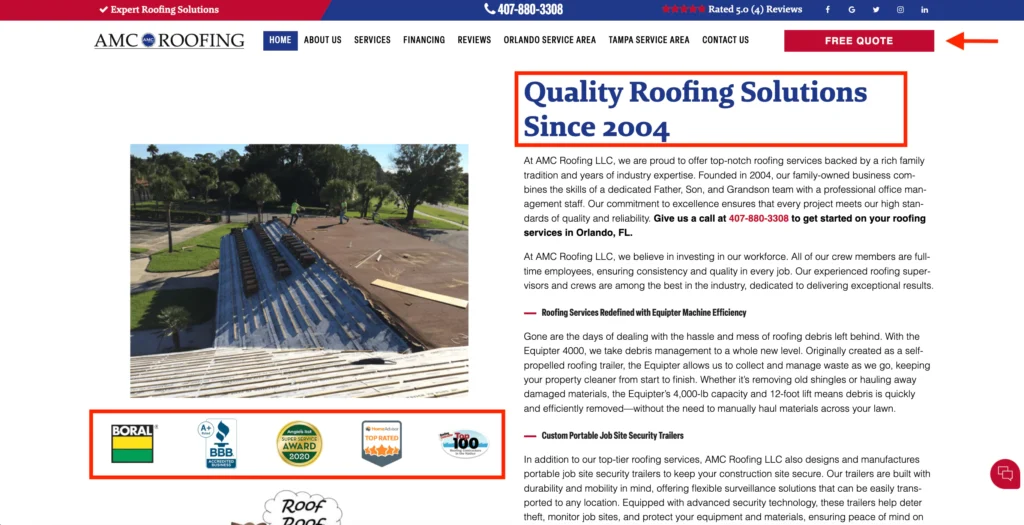
Content and SEO
Once you have established your audience, organized your proposed content, and created a unique perspective and value for your content, you can focus on the nuts and bolts of SEO.
This is where all of the following come into play:
- Keyword Optimization
- Headings (H Tags)
- Meta Descriptions
- SEO Titles (Title Tags)
- Alt Tags
- Hyperlinks
Keyword Optimization
Keywords tell search engines what your page is about. However, you must avoid stuffing keywords when placing them in your content.
Instead, utilize synonyms, sometimes called LSI keywords, to produce more readable text. As Google’s algorithm has improved, it can more accurately detect related terms.
Google wants to see a contextual relationship between terms, concepts, and ideas.
For example, a “Shingle Roofing” page should also cover related topics like composition, asphalt shingles, etc. It should also include associated verbs, such as repairs, installation, and maintenance.
The art of placing enough keywords on your page combined with your city without overdoing it is the difference between a well-crafted page and a spammy page.
Ultimately, your page should be written with the audience in mind, and the keywords should naturally flow into the content.
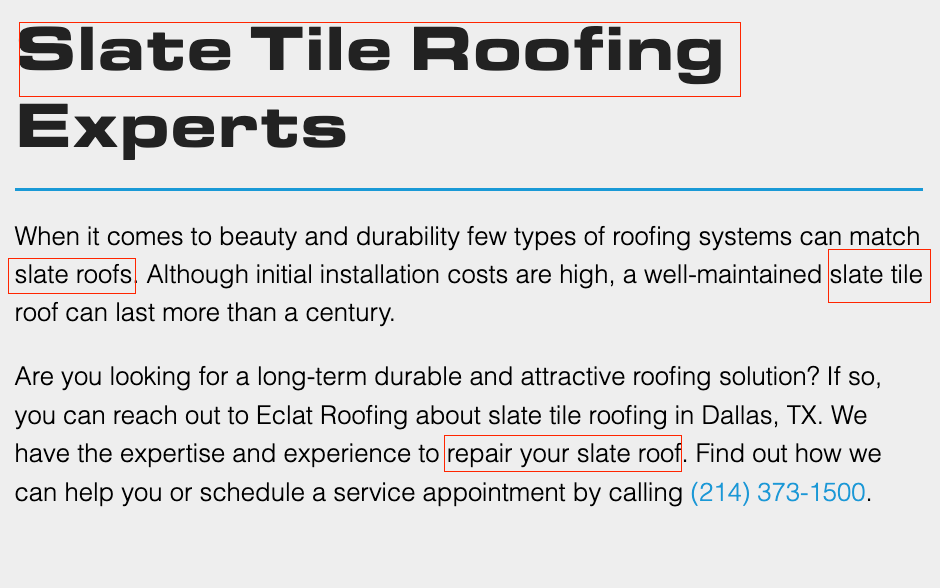
Headings: H Tags
Your copy should include headings, which are called H tags. These are important indicators to Google of what your page covers.
They also provide a visual cue for your readers to scan your content more easily. Your page should always have one Heading 1 or H1 and a variety of H2s and H3s, depending on the length of the page.
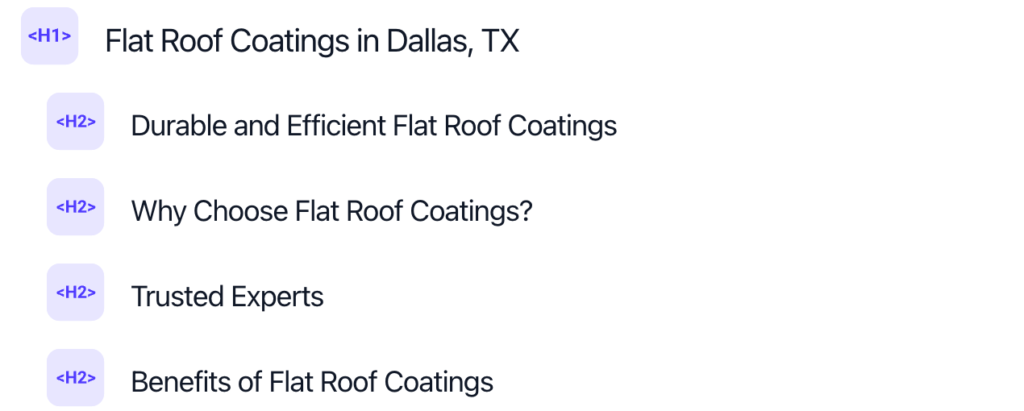
Meta Descriptions and SEO Titles (Title Tags)
Your SEO title, or title tag, is one of the most important components of your content’s SEO. This title tag tells Google what the page should be about and also shows up to users when they find you in a search.
When you type a search into Google and read through the results, you will see a title tag and meta description for the results.
For example, the results page might say:
City Roofing Company | Roofing Contractor
www.roofingcompanyhere.com
Our Roofing Company in City is the best company to choose for superior service. Contact our Roofing Contractor today at 888.888.8888.
The first component of this is the SEO Title, and when you write your SEO title, you need to use the most important keywords for that page.
These will be your primary keywords for your home page. Also, these will be the secondary keywords for your interior pages.
Your meta description is a quick call to action and should include the keywords found in your SEO title.
This content is most important to your ability to succeed online. A poorly written SEO title or meta description can ruin your optimization chances.
Title Tags length: 50-60 characters
Meta Description length: approx. 155 characters
Alt Tags & Hyperlinks
Finally, you should also include alt tags and hyperlinks on your pages. Alt tags are descriptions that you attach to your images.
This description should include keywords when applicable but must match the image context. You cannot resort to stuffing unrelated keywords into the image alt text.
Hyperlinks are clickable texts that take users from their current page to a different one. You can link to internal pages on your own site or externally.
Ultimately, your hyperlinks need to be beneficial to your readers.
Enhancing Your Content
Not only does your content need to be clear, easy to follow, and contain all the critical components of SEO to succeed, but it also must be enhanced.
Enhancing your content does two things:
1. Makes it more appealing for your reader
2. Makes it more favorable in the eyes of Google, leading to higher rankings
So, how do you enhance your content?
The following are all things you should include on every page to create a better reading experience:
- Photos
- Diagrams
- Videos
- FAQ Schema
- Bold & Italics
- Bullet Points
- Numbered Lists
When it comes to enhancing your content, think of it from your own personal perspective.
Would you rather read one giant block of text or be more drawn to diverse content that provides images, breaking points, and easy-to-follow lists?
Ultimately, Google’s goal is to send its users to a website that answers their questions, provides useful information, and is geared toward the reader.
All content should be written with the reader in mind, not simply for optimization purposes.
FAQ schema can enhance your roofing content by answering frequently asked questions about your company or services.

Editing & Final Touches
Once you have completed all the pieces and constructed your outstanding content, you must perfect it through editing and final touches.
Read back through every word you wrote to ensure it flows properly and is easy to follow.
Watch out for all the following:
- Grammar
- Punctuation
- Spelling
- Sentence Length (Google favors shorter, easier-to-digest sentences)
- Ease of Understanding
If you are writing your own content, having someone else read over it before it ever goes live is not a bad idea.
This allows you to catch things that seem logical but are difficult for another reader to understand. Better yet, use the Grammarly Chrome extension to find writing errors in real-time.
Once you have added your final touches, it is time to publish and watch your perfect content rise to the top.

Marketing Your Content
Your work is not done after writing great content for your roofing company website. Content should be marketed through various channels to reach the most possible users, known as content marketing.
Content marketing aims to create more visibility, build links, and brand your company online.
For example, blog posts are a popular type of marketing content because they can be published on social media networks such as Facebook and LinkedIn.
Not every page of content is going to go “viral.” In fact, in the case of roofing contractors, very few of them will. But remember that reach and visibility are both relative to the competition.
If you can generate more traffic than the next best roofer in your service area, you win that battle and secure the highest possible ranking.
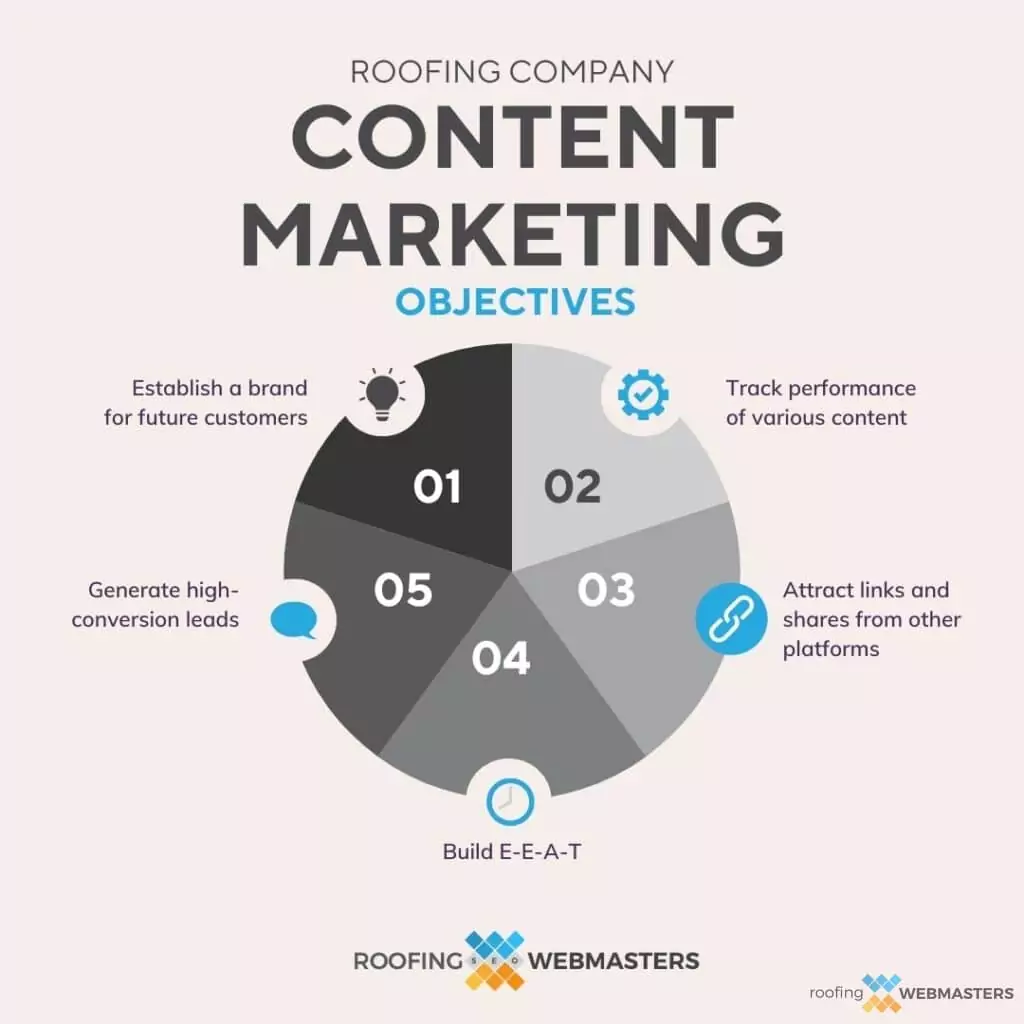
Summary
Content is not simply throwing words up and hoping for the best. To construct perfect content, you must dedicate hours of research, writing, implementation of proper SEO tactics, and more!
That is why our team is comprised of several professional writers with an editor on staff to ensure that every content page is perfect. If you do not perfect your content, you cannot succeed long-term online.
Over the years, we have learned precisely the key ingredients for the perfect page and the exact way to implement those ingredients.
For example, when constructing a home, if you skip a single step of building the foundation, putting together the frame, and finally adding all the final features, your home will be shoddy at best.
Don’t settle for second best when it comes to your web presence. Every day, we run into business owners across the country who simply do not have the time, resources, or skills necessary to construct perfect content.
We know that your priority is running your business. That is where our team can come into play. We will build your website and fill it with carefully created content.
Download the Free PDF for How to Write Perfect Content From Roofing Webmasters.



